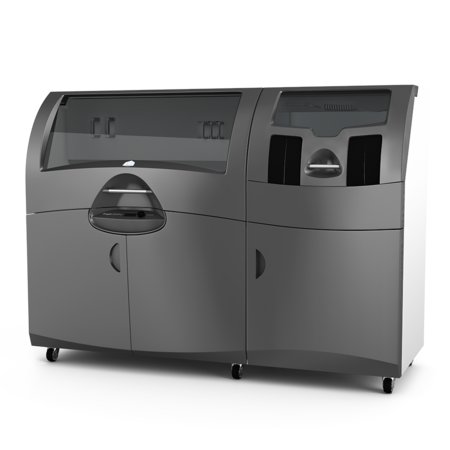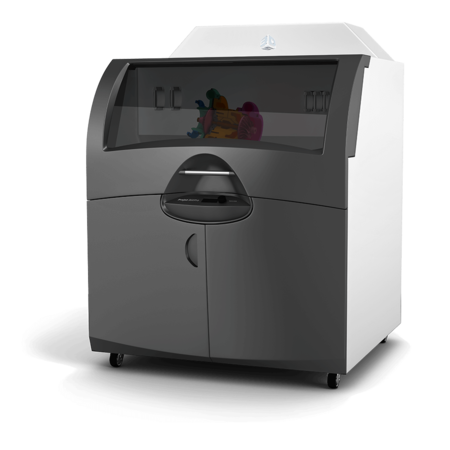"The speed of Color Jet Printing (CJP) enables us to deliver a very quick turnaround as a rule, even when we brand the customer's models with their 3D printed name and incorporate topography. On every criterion, the ProJet CJP 360 made the most sense." - Jake Cook, Co-founder, Sweet Onion Creations
It burst onto the landscape in early 2007 - Sweet Onion Creations, a company creating premium scale building models for architectural firms and real estate developers around the world.
The Bozeman, Mont., business, founded by a couple with dual MBAs, is quickly gaining notice for the rapid turnaround of its service and the sustainable way the business operates.
Sweet Onion 3D prints its architecture models using full-color printing from 3D Systems.
In his undergraduate days, Sweet Onion co-founder Jake Cook witnessed 3D printing technology in action in an engineering lab and was impressed. "Although I eventually forgot about it, I was surprised to learn two years later that my architect friends were still in the stone age: they hadn't even heard of 3D printing, much less used it to create affordable concept models for their building designs."
Challenge
Cost-effective model making
Sensing opportunity, Jake, and his wife, Lee, spent a year doing intensive market research on the need for premium-quality, affordably priced architecture models. The Cooks found that most architects were either spending too much time and money handcrafting models or cutting corners by settling for computer screen renderings. A physical model with the ability to walk around it, remove a roof section, or peer down a hallway yields superior understanding and an emotional connection that on-screen images can't.
Market research evolved into business planning. The Cooks evaluated several 3D physical modeling technologies. Other 3D printing technologies were far more expensive and would introduce undesirable waste products into their office. By comparison, inkjet-based 3D printing was a faster, more affordable and "greener" alternative for creating architecture models. With a Color Jet Printer, the Cooks could create a model in one-sixth the time and at one-third of the cost of a handcrafted 3D model.
Solution
ProJet CJP 360
"On every criterion, the ProJet CJP 360 made the most sense," says Jake Cook. The couple considered other Color Jet printers that print in multiple colors the only ones on the market that can do this but monochrome turned out to be enough. "Although architects are highly tuned aesthetically, the tradition is monochrome. In the design and approval stage, the primary concern is form and space."
Sweet Onion Creations' early business focused mostly on architects in the Bozeman/Big Sky region of Montana. Their first job was a big one modeling luxury homes in the 13,600- acre private golf, ski and wildlife "Yellowstone Club" community. One of the buildings was a $155 million mansion. "It was three straight weeks of nonstop model production, but the client was delighted with the results," says Cook. "So were we."
Results
Meeting Growing Worldwide Demand
In August 2007, the couple took their business global, offering architecture models via the company's Web site, www.sweetonioncreations.com. Architects now upload any computer aided design file and receive a finished architectural model typically within a week. Since then the company has been flooded with orders and inquiries from around the world.
The day after the Sweet Onion video hit the 'net, a Monday morning, the company received an order from a restaurateur's architect in Birmingham, Ala. By Thursday, the model was in the client's hands, and by the next Monday the architect was showing it off to the restaurateur.
"The speed of the ProJet CJP 360 enables us to deliver a very quick turnaround as a rule, even when we brand the customer's models with their 3D printed name and incorporate topography, which very few other modelers are doing these days," says Cook.
An award brought more global attention. The company was named the "greenest" company among the Home-Based 100 selected by StartupNation, an online business advice site for entrepreneurs. The Cooks were delighted with the award as validation of Sweet Onion's values and efforts. Although green is clearly good marketing these days, many don't realize it is good business in the bottom-line sense, notes Cook.
"Electricity is expensive, so we minimize it, which helps both our business and the environment. By the same token, toxic waste disposal is expensive, so we avoid it by using this printer That benefits our business and the environment as well. No tradeoff."
The company conserves electricity by enclosing the 3D printer in a small room warmed by a space heater. The office's fluorescent lights are reclaimed from a home renovation. The company purchases a "green tag" from Bonneville Environmental Foundation (a wind farm user) for every model produced to offset the electricity consumption. Sweet Onion ships models in re-used cardboard boxes filled with biodegradable packaging peanuts. It offers discounts on models of buildings designed for certification under the U.S. Green Building Council's Leadership in Energy and Environmental Design (LEED) standards and on models of buildings designed by LEEDS-accredited professionals. Like many Color Jet printer users, Sweet Onion recycles the powder from which 3D models are removed after their printing. When a model arrives on a client's doorstep, the box contains a small card explaining how Sweet Onion minimizes environmental impact.
"The world is beginning to understand that business is no longer at odds with sustainability," says Cook. "We're gaining traction, loving what we do, and minimizing our impact on natural resources. The ProJet CJP 360 is a central part of our business and vision. And though we're being careful about growth, we look forward to the day we need two or three printers producing multiple models at once."

